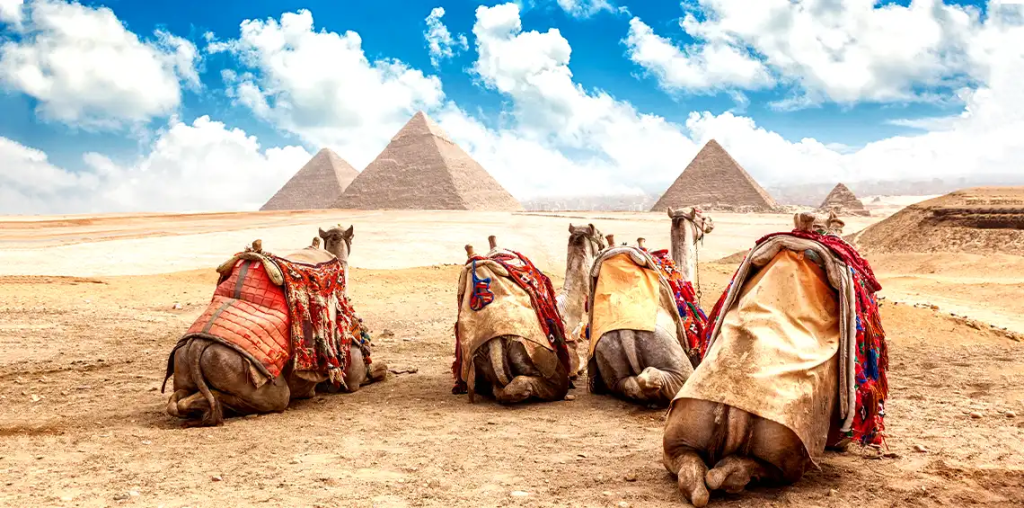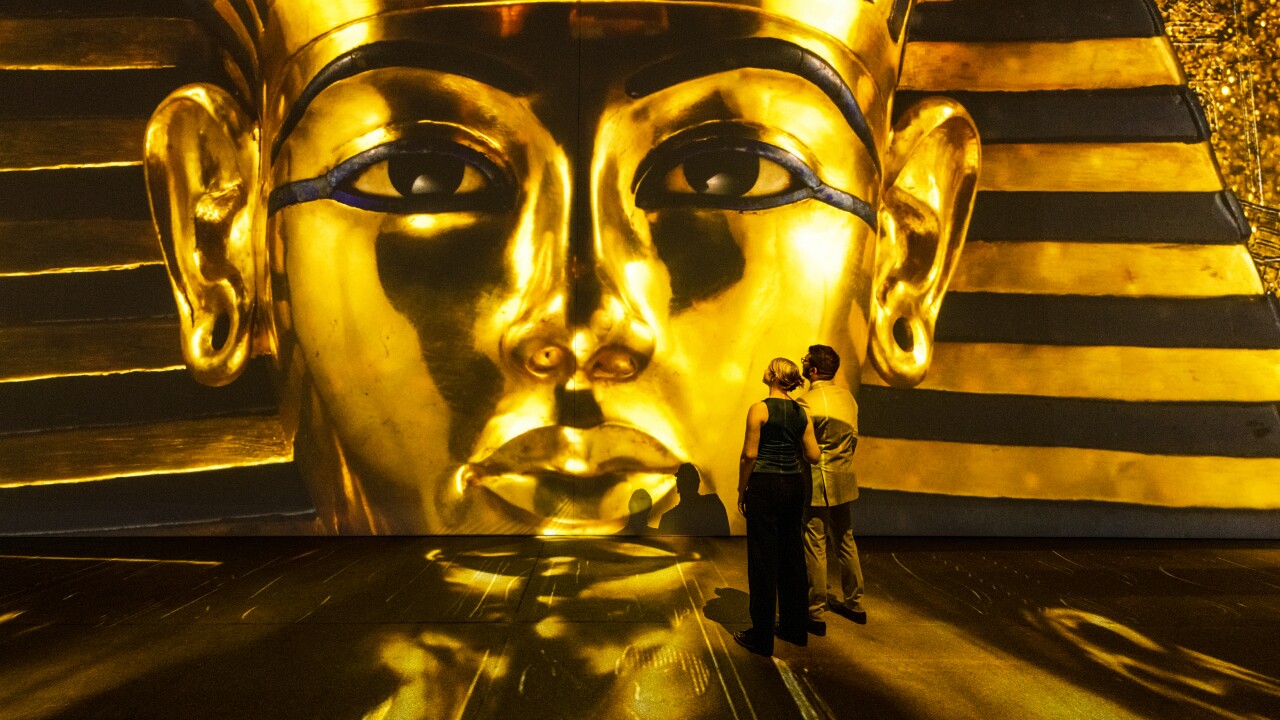
Amidst the storied landscape of Egypt’s ancient monuments, the Pyramid of Djedefre stands as a lesser-known gem, shrouded in mystery and historical intrigue. Built during the Fourth Dynasty of ancient Egypt, this pyramid is a testament to the lesser-known pharaoh Djedefre and his ambitious architectural legacy. In this comprehensive blog post, we delve into the captivating history, architectural enigma, and cultural significance of the Pyramid of Djedefre.
The Pharaoh’s Ambition: The Pyramid of Djedefre, located at Abu Rawash near Giza, was constructed to serve as the final resting place for Pharaoh Djedefre, the son of Khufu (builder of the Great Pyramid) and the successor of Pharaoh Sneferu. Despite his relatively short reign, Djedefre aimed to carve out his legacy through this pyramid, leaving behind questions that continue to intrigue historians and archaeologists.
Architectural Anomalies: The Pyramid of Djedefre deviates from the familiar pyramid structure in intriguing ways. Unlike its smooth-sided counterparts, the pyramid’s lower layers are built with a core of mudbrick, a departure from the usual limestone or limestone casing. This departure from traditional construction methods raises questions about Djedefre’s motivations and the reasons behind this unorthodox choice.
Historical Puzzles: Djedefre’s reign is shrouded in historical mystery, and his pyramid adds another layer of intrigue. Some theories suggest that his pyramid’s unconventional construction materials were a deliberate departure to emphasize his individuality and break away from the legacy of his father, Khufu. Additionally, theories abound regarding Djedefre’s possible reign length, motivations, and even his relationship with the Sphinx, which lies not far from his pyramid.
Cultural and Symbolic Importance: While the Pyramid of Djedefre might be overshadowed by its more famous neighbors, its construction still adhered to the deep-rooted Egyptian belief in the importance of the afterlife. Just like other pyramids, it served as a conduit for the pharaoh’s divine transition and his journey to the realm of the gods. Its location near the Giza Plateau highlights Djedefre’s aspiration to be a part of Egypt’s grand funerary landscape.
Modern Exploration and Preservation: The Pyramid of Djedefre has attracted modern researchers and historians eager to uncover its secrets. Excavations and studies have yielded insights into its construction and the historical context in which it was built. Efforts to preserve this lesser-known pyramid ensure that its unique history continues to be explored and appreciated by those curious about Egypt’s ancient past.
A Window into the Past: The Pyramid of Djedefre offers a tantalizing glimpse into a pharaoh’s desire to leave his mark on history, even if his reign remains enigmatic. As researchers continue to unravel its mysteries, it becomes a portal through which we can peer into the world of ancient Egypt—a world of ambitions, dynastic complexities, and a quest for immortality that transcends time.
Best Tours to Egypt
Within Egypt’s embrace lies a realm of majestic creations that stir the soul and redefine magnificence. Embark on the adventure you’ve always dreamt of and unveil the extraordinary beauty that graces this ancient land. Our Egypt holiday packages from the UK are your gateway to an enchanting journey through Egypt’s captivating destinations.

4 Days Cairo and Abu Simbel Tour Package
Embark on an unforgettable 4-day tour package to Cairo and Abu Simbel, where ancient wonders and majestic temples await. Explore the iconic sites of Cairo, including the pyramids of Giza and the Egyptian Museum, before journeying to Abu Simbel to witness the breathtaking temples of Ramses II and Nefertari. With our carefully curated itinerary, knowledgeable guides, and inclusive services, this tour offers a compact yet immersive experience of Egypt’s rich history. Discover the secrets of the pharaohs, marvel at awe-inspiring architecture, and create lasting memories View Tour Details

5 Days Cairo and Alexandria Tour Package
Embark on a 5-day journey through Egypt’s most fascinating cities, Cairo and Alexandria. From the grand pyramids and ancient temples to the coastal beauty and cultural landmarks, this tour package is designed to showcase the best of both worlds. With expert guides, comfortable accommodations, and convenient transportation, you’ll have an immersive and hassle-free experience. Join us on this captivating adventure and create memories that will last a lifetime View Tour Details

6 Days Cairo, Luxor, Aswan & Abu Simbel Package
Embark on an extraordinary 6-day journey through the heart of ancient Egypt with our Cairo, Luxor, Aswan & Abu Simbel package. Begin your adventure in Cairo, where you’ll explore the iconic pyramids and delve into the treasures of the Egyptian Museum. Continue to Luxor and Aswan, where you’ll witness the grand temples along the Nile River, and conclude your tour with a visit to the awe-inspiring temples of Abu Simbel. With expert guides, comfortable accommodations, and hassle-free transportation, this package offers a comprehensive exploration of Egypt’s historic sites. Join us on this incredible journey and unlock the secrets of the pharaohs View Tour Details

7 Days Cairo, Luxor & Alexandria Tour
Experience the best of Egypt’s cultural and coastal attractions with our 7-day Cairo, Luxor & Hurghada holiday. Begin your journey in Cairo, where you’ll discover the iconic Pyramids of Giza, explore the ancient artifacts at the Egyptian Museum, and immerse yourself in the vibrant atmosphere of Egypt’s capital. Then, travel to Luxor, often referred to as the world’s greatest open-air museum, where you’ll explore magnificent temples, tombs, and archaeological sites. Finally, unwind in the idyllic beach destination of Hurghada, known for its pristine beaches and vibrant marine life View Tour Details
Related Egypt Tours Blog

Embark on an enchanting journey to the Giza Pyramids Complex, a testament to the ancient wonders of Egypt. Explore the iconic pyramids, unravel the mysteries of the Sphinx, and immerse yourself in the rich history of this UNESCO World Heritage Site. Join our guided tour to experience the awe-inspiring architecture, captivating legends, and breathtaking views of the Giza Plateau View Tour Details

The Saqqara Step Pyramid is a cornerstone of ancient Egyptian architecture, marking the transition from mastaba tombs to monumental pyramids. This guided tour takes you to Saqqara’s historical complex, where you’ll not only encounter the Step Pyramid but also explore fascinating tombs, chapels, and ancient structures View Tour Details

The Great Sphinx is an iconic masterpiece that has fascinated travelers for millennia. As you approach this enigmatic creature, you’ll feel the weight of history and the sense of wonder it evokes. Our expert guides will lead you through its mysteries and offer insights into the Sphinx’s role in ancient Egyptian culture View Tour Details
Pyramid of Djedefre FAQs
- What is the Pyramid of Djedefre? The Pyramid of Djedefre, also known as the Pyramid of Radjedef, is an ancient Egyptian pyramid located in Abu Rawash, near Cairo. It is associated with Pharaoh Djedefre, a ruler of the 4th Dynasty.
- Who was Djedefre? Djedefre, also known as Pharaoh Djedefra, was a son of Pharaoh Khufu (builder of the Great Pyramid) and succeeded his father as ruler. He built his pyramid during the 4th Dynasty.
- When was the Pyramid of Djedefre built? The construction of the Pyramid of Djedefre is estimated to have taken place around 2570-2565 BCE during the Old Kingdom period of ancient Egypt.
- What is the significance of the Pyramid of Djedefre? The Pyramid of Djedefre is significant as a testament to Djedefre’s reign and his contributions to pyramid-building during the Old Kingdom.
- How does the Pyramid of Djedefre compare in size to other pyramids? The Pyramid of Djedefre is smaller in scale compared to the more famous Giza pyramids. It is part of a series of smaller pyramids built by later 4th Dynasty pharaohs.
- What are the dimensions of the Pyramid of Djedefre? The Pyramid of Djedefre has a base measuring approximately 106 meters (348 feet) on each side and an original estimated height of around 67 meters (220 feet).
- Is the Pyramid of Djedefre open to visitors? Yes, the Pyramid of Djedefre is open to visitors, but it is less frequently visited than the Giza pyramids. Access might require arranging visits with local authorities or tour guides.
- Can visitors enter the interior of the Pyramid of Djedefre? As of my last update in September 2021, visitors are not commonly allowed to enter the interior of the Pyramid of Djedefre. However, conditions might vary, so it’s best to check with authorities for the latest information.
- What can visitors see around the Pyramid of Djedefre? Visitors to the Pyramid of Djedefre can appreciate the unique architecture and historical context of the pyramid, along with views of the surrounding landscape.
- Is the Pyramid of Djedefre associated with any legends or myths? While the Pyramid of Djedefre might not have as many myths or legends associated with it as other pyramids, it is still a part of the broader ancient Egyptian belief system and historical narrative.
- What is the significance of the Pyramid of Djedefre’s location in Abu Rawash? The Pyramid of Djedefre’s location in Abu Rawash, north of Giza, is significant as it showcases the expansion of pyramid-building efforts to areas beyond Giza during the Old Kingdom.
- Are there any entrances to the Pyramid of Djedefre? The Pyramid of Djedefre has an entrance on its north face. This entrance leads to the internal passages and chambers of the pyramid.
- What can visitors learn from the Pyramid of Djedefre? The Pyramid of Djedefre offers insights into the architectural styles, burial practices, and historical context of the Old Kingdom period in ancient Egypt.
- Are there any inscriptions or decorations inside the Pyramid of Djedefre? The Pyramid of Djedefre’s interior is relatively simple in terms of inscriptions and decorations compared to some other pyramids. However, it might still have symbolic elements related to Djedefre’s reign.
- What makes the Pyramid of Djedefre an interesting historical site? The Pyramid of Djedefre is interesting due to its unique location, its association with Djedefre’s reign, and its role in understanding the expansion of pyramid construction during the Old Kingdom.
- Are there any ongoing research or restoration efforts at the Pyramid of Djedefre? Ongoing research and restoration efforts are likely conducted to better understand the pyramid’s history, architecture, and significance, as well as to ensure its preservation.
- Can visitors climb the Pyramid of Djedefre? Climbing the Pyramid of Djedefre might not be allowed due to preservation and safety concerns. However, visitors can still enjoy the exterior and surroundings of the pyramid.
- What are the burial chambers inside the Pyramid of Djedefre used for? The Pyramid of Djedefre’s burial chambers were intended to house Djedefre’s body, funerary items, and offerings for the afterlife, according to ancient Egyptian beliefs.
- Can I take photographs of the Pyramid of Djedefre? Photography regulations might vary, but in general, taking photographs around the Pyramid of Djedefre for personal use might be allowed. Always follow local guidelines.
- What should I keep in mind when visiting the Pyramid of Djedefre? When visiting the Pyramid of Djedefre, respect the historical site, adhere to local regulations, and appreciate the opportunity to explore an often lesser-known piece of ancient Egyptian history.

